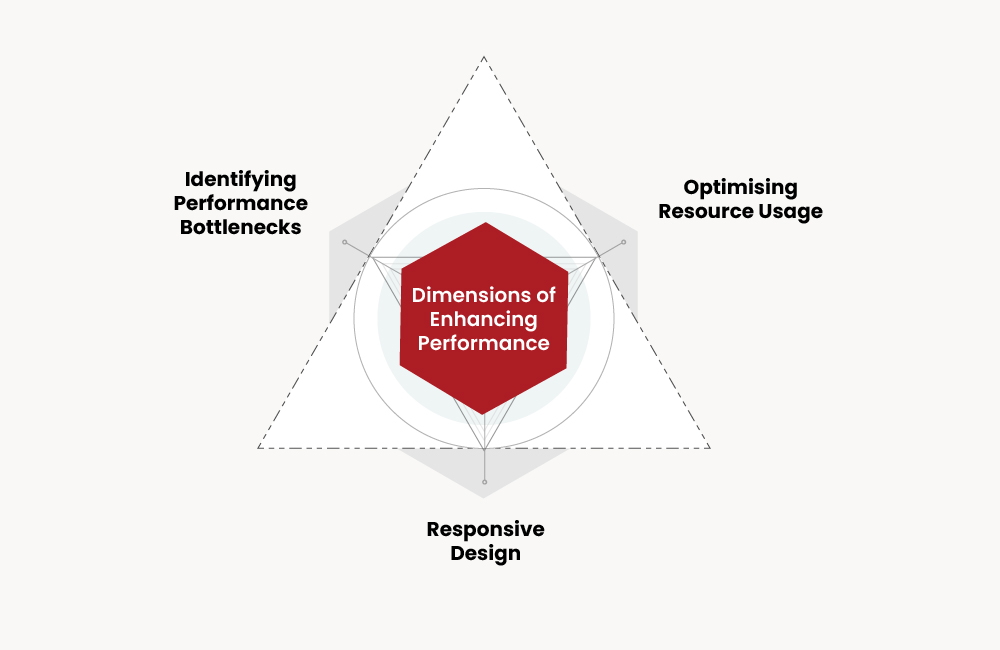In 2024, when the world is becoming software-based, the importance of software testing can be as much as the software itself. To assure the quality of any digital product, software testing is a must. The product can be the software itself. However, software plays a vital role in almost every field, from digital services to factory-manufactured products. So if you are launching a product where software plays a role, or if you are the one developing software, make sure it’s tested to provide high-quality & seamless products.
Grasping the Core Essence of Software Testing
Software testing is a procedure that assesses the functionality and evaluates the performance of a software program. It verifies whether the software meets the specified requirements and does what it’s supposed to do. Software testing spells out the errors, bugs, faults, and missing requirements in software and lets the developers build a more quality product. It is a systematic and methodological approach that varies in different stages of SDLC.
Why Is Software Testing Important?
Checklist
1. It Saves Money!

Saving money and increasing profitability is the ultimate goal of all ventures. There’s a common perception that software testing costs a lot of money. However, it’s the opposite. In the long run, it can save you tons of money.
There are primarily two ways to save money via software testing.
- Saves You from Reworks: Software testing in the early stage of SDLC can save you the costly process of reworking all the codes. Detecting a single bug in an early stage might cost you $100. But at the final stage, it can cost you more than $10,000. However, It does not only save your money but also your precious time.
- Prevents System Failure: A simple unnoticed bug can cause catastrophic damage to a system. Proper software testing can easily prevent such damage and save you in terms of money as well as reputation.
Real Life Example
Let’s look at an example. In 2023, a baby shop displayed clothes at $0. A buyer bought 40 of those clothes and sold them at another marketplace. The shopowner had nothing to do since the distribution centre was not liable for checking the invoice. This is a common scenario in many online shops and a direct example of financial losses. There are many indirect losses due to software glitches & bugs. And one thing is for sure, untested software can cost you big time!
2. The Ultimate Way to Maintain Security

The software development industry faces an upheaval in security concerns. Nowadays, it’s not just a matter of reputation. Regions like the European Union are becoming more strict. Laws such as ‘General Data Protection Regulations’ require companies to be extra careful. Data breaches can lead to severe lawsuits and endless fines. Whereas, software testing helps developers to accomplish:
- Vulnerability Assessment: Identify all security vulnerabilities before they have caused damage to the clients.
- Compliance Verification: Practice secure coding by adhering to the security standards and guidelines.
- Risk Assessment: Prioritise potential risks and allocate resources to mitigate the threats accordingly.
- Security Controls Testing: Security testing evaluates the effectiveness of security controls implemented within the software. Such as. authentication mechanisms, access controls, encryption, etc.
However, security concerns in software are not confined to only data leaks. Hundreds of people can die from a single software glitch.
Real Life Example
In April 1994, 266 people died in a plane crash, partly because of a software glitch. China Airlines Airbus A300-600R crashed in Japan at a failed landing attempt. Although there were human & corporate issues, technical (software) factors played a vital role in the crash.
3. Enhance the Performance of the Products

The fundamental goal of software testing is to determine whether a product can perform as it is required. Performing up to the mark is crucial as it serves as the key criterion for competitiveness. Software testing reveals various dimensions of performance. It helps the developers to enhance the performance of the finished product. The key dimensions are:
- Performance Bottlenecks: Poorly optimised codes are one of the key reasons behind performance bottlenecks. Bottleneck testing employs several KPIs such as response time, throughput, error rate, etc. to find constrained points.
- Optimised Resource Usage: By pinpointing areas of resource overutilisation or underutilisation, software testing guides the way to more efficient resource usage.
- Responsive Design: Responsive design testing checks whether the software is responsive and compatible with different devices & screen sizes
4. Reduce Risks & Challenges

Risk analysis is one of the primary goals of software testing. Risks in software can arise due to various reasons. Poorly defined requirements, outdated components, complex systems, inaccurate data, etc. can give birth to a known & unknown set of risks. Common vulnerabilities in software can leave your system open for attackers to exploit. To identify & mitigate such risks, risk-based tests are crucial. There are several steps to conduct a risk-based test.
- Identifying the Risks: This step involves a thorough examination to find out any vulnerabilities or risks. Testers usually perform a predetermined set of tests to systematically identify the risks.
- Assessing the Risks: Different kinds of risks can create different challenges. Assessing the likelihood and impacts of each risk can help the developers prepare a methodological strategy to mitigate the risks.
- Prioritising Risks: After assessing the risks, the next logical step is to prioritise risks. This allows the developers to outrank and deal with the most threatening risk first.
- Risk Cushioning: Risk cushioning is the process of developing risk mitigation strategies. In this step, definite strategies are set to compensate for the risks involved.
Software developers often have to work within tight schedules. It is very normal to have some flaws in the existing code that can incite risks. However, most companies test the software only as a routine process rather than as an integral part of software development. However, integrating the testing process as a core function can dramatically reduce the common associated risks & challenges.
5. Impacts Customer Satisfaction
Nothing can dissatisfy a customer like bugs and flaws. A simple bug in the login menu can destroy the smooth login experience a customer expects. Software or applications can shut down in crucial moments with loads of unsaved work. Or worse, customers can lose money in their accounts due to system glitches or poor security. Imagine the frustration of losing your money just because of a random software. While the big issues can certainly drive away customers, minor issues can also cause them to switch without giving a second thought.
Real Life Example
On 27th March 2008, British Airways faced one of its worst nightmares due to the lack of software testing. BA claimed it was a ‘calculated risk’. However, that calculated risk cost them more than 25 million pounds and thousands of horribly unsatisfied passengers. An investigation found that the baggage system software wasn’t adequately tested. This led to a disaster in the baggage handling process and cost British Airways a bunch of regular customers.
6. Protects Brand Reputation
Customer satisfaction is vital to any company. Nothing can dissatisfy a customer like bugs and flaws. A simple bug in the login menu can destroy the smooth login experience a customer expects. Software or applications can shut down in crucial moments with loads of unsaved work. Or worse, customers can lose money in their accounts due to system glitches or poor security. Imagine the frustration of losing your money just because of a random software. While the big issues can certainly drive away customers, minor issues can also cause them to switch without giving a second thought.
Real Life Example
Let’s look back on Target, an American mass-market retail company. In 2013, a software breach during the Black Friday deals broke the system. Over 100 million customers were affected & their credit information was stolen. This made a tremendous impact on Target’s brand reputation, declining its profit by 46 percent. All this mayhem cost more than $300 million to resolve. If the staff were serious about the software testing process, this dent in their reputation would have never occurred.
Concluding Remarks
Although software testing requires much effort, giving such an effort is never a waste. To deliver high-quality products in all aspects, you need to ensure that the software is adequately tested. Besides, in 2022, the testing industry crossed the $45 billion mark. This industry will continue to thrive as the digital world becomes more & more concerned regarding software security, quality, & associated regulations. You might be a business owner looking to buy from a software vendor, or an industry professional navigating through endless codes. Whomever you may be, the growth of software testing speaks of a new digital era for everyone. Software testing stands as the cornerstone of ensuring high-quality products in today’s digital landscape.
Frequently Asked Questions
What are the most popular tools for software testing?
The most popular tools for software testing consist, of Selenium, Lambda Test, Cucumber etc.
What are the common types of software testing?
Common types of software testing include functional testing, performance testing, security testing, usability testing, and regression testing, among others.
When should I start testing in the software development lifecycle?
Testing should start early and continue throughout development, with regular testing cycles during each phase.
What are the common challenges in software testing?
Common challenges in software testing include resource constraints, narrow deadlines, complex systems changing requirements, and keeping pace with evolving threats.
Why is software testing important for development?
Software testing ensures the product works as intended, finds bugs early, and saves costs. It also boosts user trust by improving quality and reliability.
How does software testing save money?
Early testing fixes bugs before launch. Fixing a bug later costs much more. Testing also prevents costly failures, avoiding rework and system breakdown.
What role does testing play in security?
Testing detects vulnerabilities, improves security controls, and ensures safe coding practices. It helps protect against breaches and builds trust in the product.
How can software testing boost performance?
Testing identifies bottlenecks, improves speed, and optimises resource use. It ensures software performs well on different devices and under varying conditions.
What are the risks of skipping software testing?
Skipping testing risks bugs, security breaches, and poor performance. It leads to unhappy users, costly fixes, and damage to your brand reputation.
What is the connection between testing and customer satisfaction?
Testing ensures software runs smoothly without errors or crashes. It delivers a better experience, keeping customers happy and loyal.
How does software testing protect your brand reputation?
Testing finds bugs before launch, preventing glitches that frustrate users. Happy users mean better reviews and a stronger reputation for reliability.
What types of tests improve software quality?
Functional, security, and performance tests are essential. They check usability, detect risks, and ensure the software meets user needs in all areas.
When should testing begin during development?
Start testing early in development. Testing each phase saves time, finds errors faster, and improves overall efficiency and quality.
Why is continuous testing a good practice?
Continuous testing catches new bugs, ensures updates work, and maintains quality. It keeps software secure and stable as features evolve.

